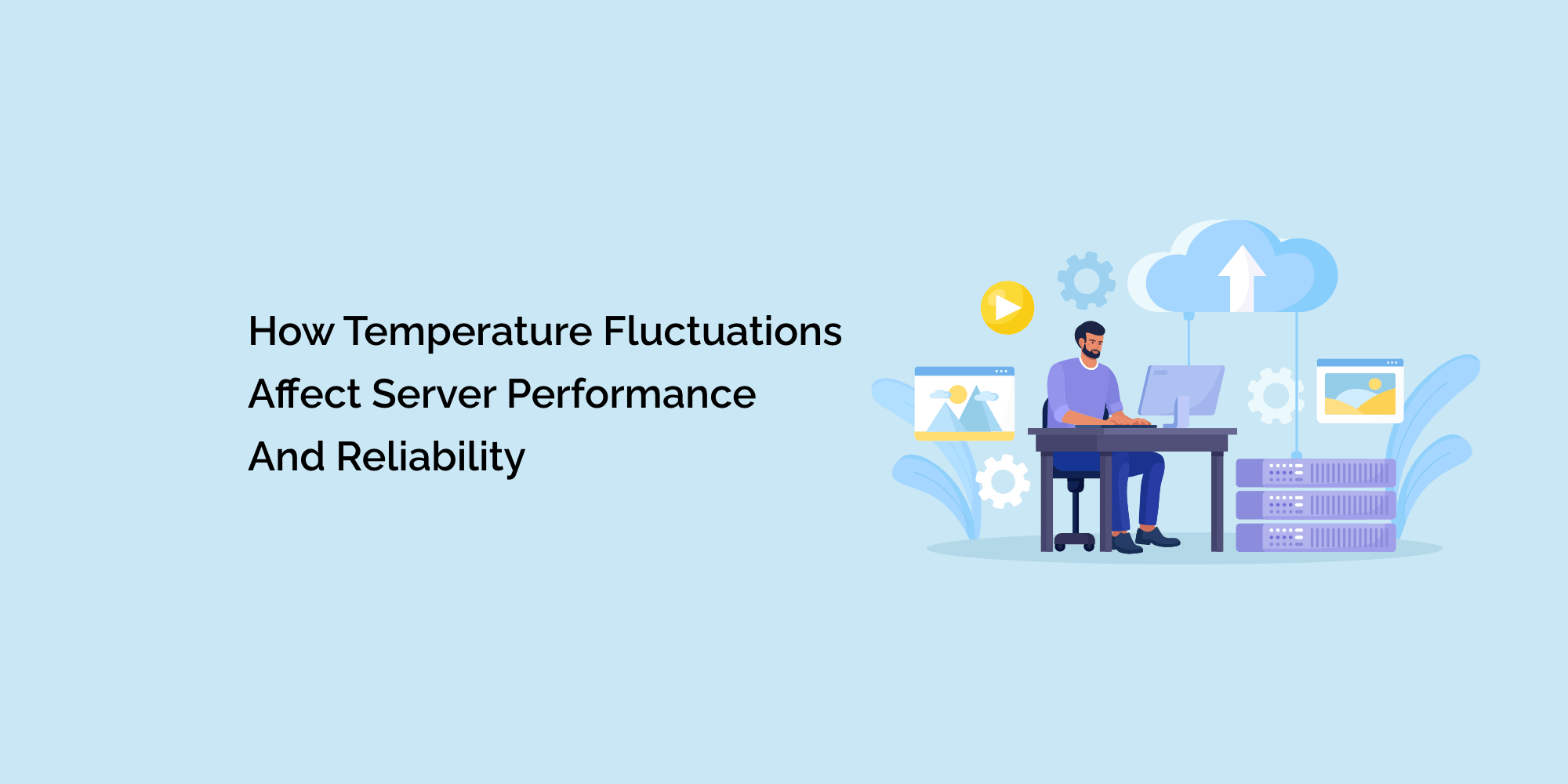Temperature fluctuations can significantly impact the performance and reliability of servers in data centers. As the demand for computational power and data storage increases, data centers face the challenge of maintaining optimal temperatures to ensure efficient operation.
In this blog post, we will explore how temperature fluctuations affect server performance and reliability, and the steps data center managers can take to mitigate the risks associated with temperature variations.
The Impact of High Temperatures on Server Performance
High temperatures can have a detrimental effect on server performance. When the ambient temperature rises above the recommended range, the internal temperature of server components, such as CPUs and memory modules, also increases. As a result, servers may experience reduced processing power, slower response times, and increased error rates. High temperatures can also lead to thermal throttling, where servers automatically reduce their performance to prevent overheating, causing a significant decrease in overall efficiency and productivity.
Effects of Low Temperatures on Server Reliability
While high temperatures are a concern, low temperatures can also impact server reliability. When the ambient temperature drops below the recommended range, the risk of condensation increases. Condensation can occur when warm, moist air comes into contact with cold server components, leading to moisture buildup and potential short circuits. Low temperatures can also cause the contraction of electronic components, potentially resulting in physical damage. Additionally, cold temperatures can impact battery performance and reduce the efficiency of cooling systems, leading to inadequate heat dissipation.
Impact of Temperature Fluctuations on Hardware Lifespan
Temperature fluctuations can significantly impact the lifespan of server hardware. Rapid temperature changes, such as when servers are exposed to alternating hot and cold environments, can cause thermal expansion and contraction of components, leading to stress and potential damage over time. Elevated temperatures can accelerate the aging process of electronic components, reducing their overall lifespan. Furthermore, temperature variations increase the likelihood of temperature-induced failures, resulting in costly downtime and potential data loss.
Mitigating Risks Through Effective Temperature Management
To mitigate the risks associated with temperature fluctuations, data center managers should implement effective temperature management strategies. This includes adopting measures such as:
Proper Airflow Management:
Ensuring efficient airflow through server racks and minimizing obstructions can help maintain uniform temperature distribution and prevent hotspots.
Cooling System Optimization:
Implementing efficient cooling systems, such as precision air conditioning and liquid cooling solutions, can help regulate temperatures effectively.
Temperature Monitoring and Alerting:
Deploying temperature monitoring systems with real-time alerts enables proactive identification of temperature anomalies, allowing for swift corrective action.
Redundancy in Cooling Systems:
Implementing redundant cooling systems provides backup in case of cooling system failures, minimizing the risk of temperature fluctuations.
Regular Maintenance and Cleaning:
Conducting routine maintenance, including cleaning and inspecting cooling equipment, ensures proper functioning and optimum performance.
Environmental Monitoring:
Monitoring factors such as humidity and air quality in addition to temperature can provide a comprehensive view of the server room environment.
The Role of Advanced Temperature Monitoring Solutions
Advanced temperature monitoring solutions, such as TempCube, play a crucial role in mitigating the impact of temperature fluctuations. TempCube offers high-accuracy temperature sensors, real-time monitoring, and alerting capabilities. It provides comprehensive coverage of server rooms and allows data center managers to proactively identify and address temperature-related issues promptly.
Conclusion
Temperature fluctuations can have a profound impact on server performance and reliability in data centers. By understanding the effects of high and low temperatures on server hardware and implementing effective temperature management strategies, data center managers can minimize the risks associated with temperature variations.
Regular maintenance, proper airflow management, cooling system optimization, and advanced temperature monitoring solutions like TempCube can significantly contribute to maintaining optimal temperatures and ensuring the reliable operation of servers. By prioritizing temperature management, data centers can enhance server performance, extend hardware lifespan, and reduce the potential for costly downtime and data loss.








